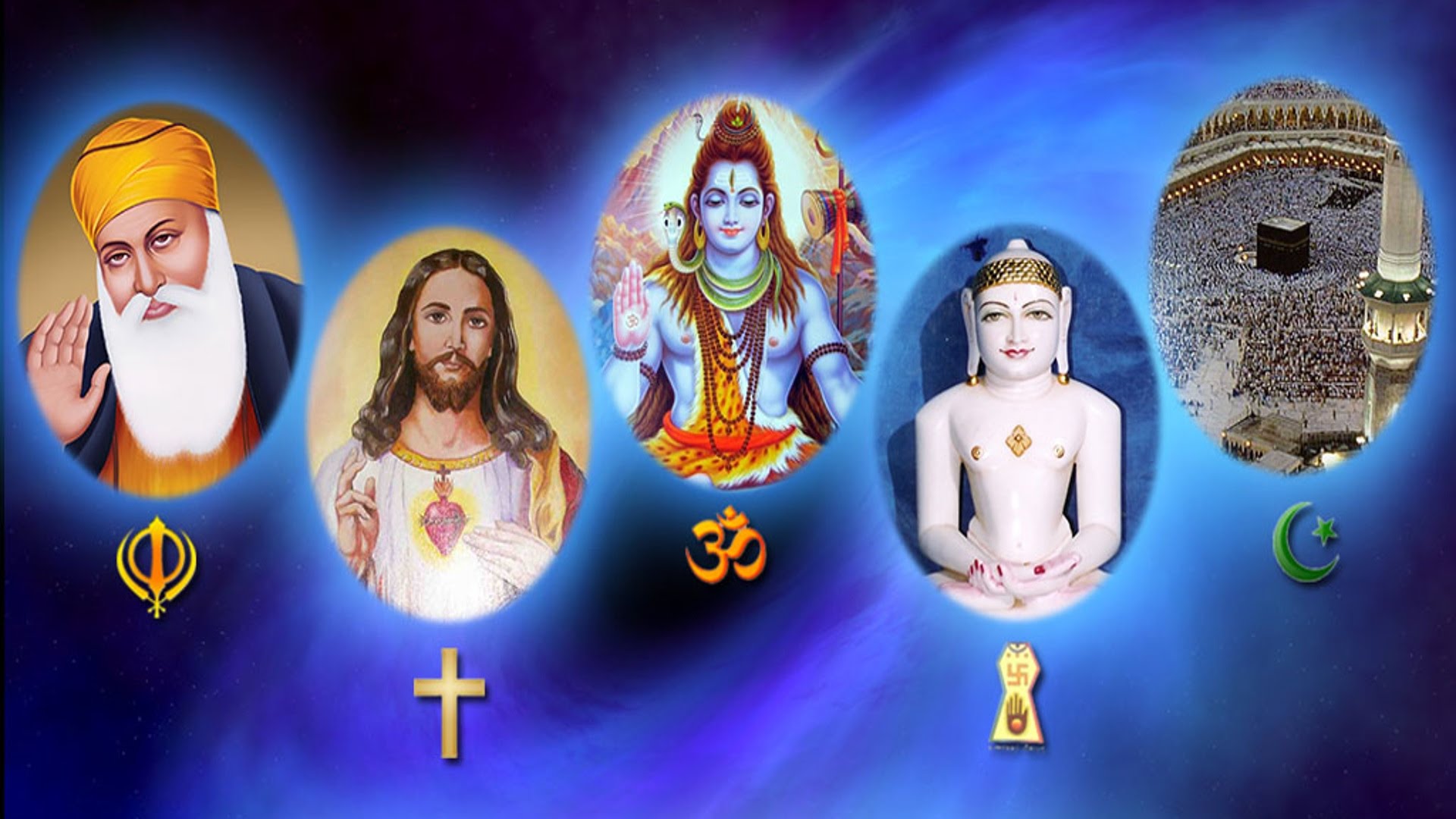
Great Buddha Statue near Mahabodhi Temple in Bodh Gaia, Bihar state of India

Buddhism is a religion that began in Nepal around 2500 years ago. A Hindu prince, Siddhartha Gautama, set off to gain enlightenment and the solution to suffering. At first, he followed traditional Indian teachings, seeking truth through self-denial and meditation.i But he did not find what he sought, so he turned inward, seeking the meaning of life by meditating on his own experiences.
Buddhists believe that is when he gained enlightenment which gave him insight into his past lives, an understanding of karma, reincarnation and spiritual awakening through the understanding of the Four Noble Truths.iiBuddhism teaches that while in this state, Brahma, king of the gods in Hinduism, asked Siddhartha Gautama to teach his newfound understanding to others. Thus was born the Buddhist religion.
Buddha called himself “the ‘Truth-body’ or the ‘Embodiment of Truth’, as well as Dharmabhuta, ‘Truth-become’, ‘One who has become Truth.’”iiiDhamma or Dharma is also called natural law or the law of nature. Buddha said: “Whoever sees the Dhamma sees me; whoever sees me sees the Dhamma.”iv
Practice of Buddhism
Buddhists do not believe in a personal god, but pursue enlightenment and spiritual development through certain rituals including meditation, presenting offerings, burning candles and incense, the practice of yoga and chanting mantras.
Buddhism, having risen out of Hinduism, is yet another form of sun worship. Sun worship symbols like the solar wheel (in Buddhism called the dharma chakra), swastika, and halos are common in Buddhism. Buddhism also has its pantheon of solar and cosmic deities, including the sun god Mithra, who in Buddhism is called Maitreya.
As with other forms of sun worship, Buddhism is a religion that appeals to the senses. Vividly colored mandalas (sacred dyed-sand pictures), the heady scent of burning incense, the flickering light of burning candles, the rhythmic chanting of mantras, and yoga which incorporates whole body movements and worship, make Buddhism a rich sensory experience for those who practice it.
Buddhism’s Influence

Since its inception, Buddhism has been an important influence, first in Asia, then spreading to other parts of the world. Over the centuries its influence has become increasingly significant worldwide.
In North America, Buddhism’s impact is far-reaching and extensive and has been felt in all parts of society. Here is a brief overview of some of the most influential philosophers in America.
Buddhism, Theosophy and False Christs
Aside from Buddhist immigrants, Buddhism was brought to American society in 1875 by Helena Blavatsky, a founding member of the Theosophical Society, an occult organization.v Blavatsky taught the concept of a universal brotherhood of nations and influenced the New Age movement and the formation of the United Nations.
Theosophy also developed a concept of Maitreya which encompassed other religious and spiritual traditions and became known as the Cosmic Christ. Many awaiting this Cosmic Christ, another embodiment of the ancient solar deity, believe that he will enlighten the world with his teachings and unify humanity. Other religious systems based on sun worship can relate to this expectation. In a Sanskrit prophecy, Maitreya is to inspire all humanity to live a unified, holy life: “No longer will they regard anything as their own, they will have no possession, no gold or silver, no home, no relatives! … they will manage to enter into trances, and theirs will be an abundance of joy and happiness, for they will lead a holy life under Maitreya’s guidance.”vi
Buddhism and American Education and Philosophy
American writers Henry David Thoreau, Ralph Waldo Emerson and Walt Whitman also studied Buddhist philosophy. The influence of these famous writers should not be underestimated as their ideas have been absorbed by society and their writings are used in schools and universities to this day. These writers have influenced western thought by incorporating eastern mystic values in their stories.Henry David Thoreau developed theories on society’s relation to nature which have influenced modern environmentalism. Stanford Encyclopedia of Philosophy says of Thoreau, “His conception of nature is informed by a syncretic appropriation of Greek, Roman, Indian, and other sources…but he might be described as articulating a version of transcendental idealism.”vii
Ralph Waldo Emerson was a transcendentalist whose works influenced other famous contemporaries such as John Dewey, called the Father of Modern Education, and Friedrich Nietzsche who this said of Christian religion:
When we hear the ancient bells growling on a Sunday morning we ask ourselves: Is it really possible! This, for a jew, crucified two thousand years ago, who said he was God’s son? The proof of such a claim is lacking…A god who begets children with a mortal woman; a sage who bids men work no more…a justice that accepts the innocent as a vicarious sacrifice; someone who orders his disciples to drink his blood; prayers for miraculous interventions; sins perpetrated against a god, atoned for by a god; fear of a beyond to which death is the portal; the form of the cross as a symbol in a time that no longer knows the function and ignominy of the cross—how ghoulishly all this touches us, as if from the tomb of a primeval past! Can one believe that such things are still believed?viii
American society has built upon the foundation laid by these Buddhist-influenced teachers.
Current Trends with Roots in Buddhism

A number of powerful movements frequently in the news today have strong roots in Buddhism. Blockbuster movies, popular music, the natural wellness movement and environmentalism have all been influenced by Buddhist teachings. Consider the following trends: yoga, an undefined form of “spiritualism” and the Roman Catholic Church’s concept of Natural law.
Yoga
Originally a form of Hindu and Buddhist meditation involving physical, mental and spiritual practices to assist a person in reaching enlightenment,ix yoga has become one of the most popular fitness trends in many developed nations. Yoga’s melding of spiritual and physical elements, seems to meet the needs of stressed-out modern humanity. And while newcomers to yoga may see it as an appealing form of physical exercise, many come to embrace its spiritual aspect as well.
It’s important to remember that yoga is part of ancient sun worship religions and as such, retains many of its religious elements. The Surya Namaskara, or salute to the sun, is an obvious example. This series of yoga moves includes prostration, a position of complete surrender and submission, to the sun. Yoga was developed to accomplish the goals of Hinduism and Buddhism and whether these goals are apparent or not, they are an intrinsic part of what yoga is. A popular American yoga instructor explains, “Everything that’s called yoga can be considered a true spiritual practice…the purpose of the posture is not just to get a fit body, but instead to give you a more peaceful life, to help you direct your mind inward.”x
The Nones
Researchers studying religious trends have noted a dramatic growth in the group who select “none” when asked to identify their religious affiliation. A recent poll found that 71% of adults, of which 82% of those under 25 years of age, reported that they are more likely to formulate their own set of religious beliefs than to accept a set of beliefs defined by any church.xi
Researchers note, “This has resulted in an abundance of unique worldviews based on personal combinations of theology drawn from a smattering of world religions such as Christianity, Buddhism, Judaism, Hinduism, and Islam as well as secularism.”xii Another poll found that more than 1 in 3 Americans now claim to be spiritual but not religious.xiii These spiritually minded yet unaffiliated people are often open to the kind of inward-seeking spirituality that Buddhism represents.
Buddhist terms that have come into common usage attest to the fact that society has become comfortable with and has adopted many ideas rising from Buddhism. Words like zen, karma, mantra, nirvana, yin yang and talk of past lives derive from Buddhism and related religions.
Natural Law
Buddhists and Catholics have much in common, not the least of which is their concept of natural law. The Papacy holds that natural law
• is “founded in our nature and revealed to us by our reason,”
• means that “good is to be done, and evil avoided,” and
• “applies to the entire human race.”xiv
It may be surprising to many that Catholicism, an apparently Christian religion, promotes natural law above the Law of God. But, in fact, Catholicism and Buddhism share common roots in sun worship and Catholicism is Mithraism in Christian garb.
Counterfeit to Christ

Throughout history, Satan has prompted humanity to counterfeit God’s plan of salvation by developing religions with features that resemble God’s plan. Sun worship religions possess many such characteristics. Satan can do this because he has inside knowledge of God’s government. God allows Satan to work his deceptions for a period of time because many prefer to live unrighteous lives than to live in obedience to God. Jesus said, “I am the way, the truth, and the life: no man cometh unto the Father, but by me” (John 14:6). Both Jesus and Buddha can’t be right. The Word of God tells us:
2 Thessalonians 2:8-10
King James Version (KJV)
8 And then shall that Wicked be revealed, whom the Lord shall consume with the spirit of his mouth, and shall destroy with the brightness of his coming:
9 Even him, whose coming is after the working of Satan with all power and signs and lying wonders,
10 And with all deceivableness of unrighteousness in them that perish; because they received not the love of the truth, that they might be saved.
Without dispute, Buddha was an important person who has shaped the thinking of millions of people around the world. But Buddhism carries the unmistakable markings of sun worship which Satan inspired to obtain worship for himself. Buddha was the son of a Hindu king. Jesus, however, is the only Son of God.
Are There Many Paths to God (e.g. Islam, Buddhism, etc.)?
Teacher: Brother Elisha
Church: The Household of Faith
Sources
i. “Who Was Buddha?” The Buddhist Centre: Buddhism for Today, accessed June 6, 2014, https://thebuddhistcentre.com/text/who-was-buddha.
ii. “Enlightenment in Buddhism,” Wikipedia, accessed June 6, 2014, http://en.wikipedia.org/wiki/Enlightenment_in_Buddhism.
iii. “God in Buddhism,” Wikipedia, accessed June 6, 2014, http://en.wikipedia.org/wiki/God_in_Buddhism.
v. “Buddhism in the United States,” Wikipedia, accessed June 5, 2014, http://en.wikipedia.org/wiki/Buddhism_in_the_United_States.
vi. “Maitreya,” Wikipedia, accessed June 5, 2014, http://en.wikipedia.org/wiki/Maitreya.
vii. “Henry David Thoreau,” Stanford Encyclopedia of Philosophy, accessed June 5, 2014, http://plato.stanford.edu/entries/thoreau/.
viii. “Christianity,” The Perspectives of Nietzsche, accessed June 5, 2014, http://www.theperspectivesofnietzsche.com/nietzsche/nchrist.html.
ix. “History of Yoga,” Wikipedia, accessed June 5, 2014, http://en.wikipedia.org/wiki/History_of_yoga.
x. Kino MacGregor, “The Goal of Yoga,” accessed June 5, 2014, http://www.youtube.com/watch?v=xVW_EKCEA5A.
xi. “Christianity is No Longer Americans’ Default Faith,” Barna Group, accessed June 5, 2014, https://www.barna.org/barna-update/faith-spirituality/15-christianity-is-no-longer-americans-default-faith#.U4teF7C3-M8.
xiii. “’Nones’ on the Rise,” Pew Research, accessed June 6, 2014, http://www.pewforum.org/2012/10/09/nones-on-the-rise/.
xiv. “Natural Law,” New Advent Catholic Encyclopedia, accessed June 6, 2014, http://www.newadvent.org/cathen/09076a.htm.
Published by Amazing Discoveries
Read original post here.

More Stories
PANDEMIC UPDATE: ISRAEL, THE CHURCH OF JESUS!
The Mark of The Beast
Pope prepares for Mark of the Beast with consideration of ‘universal basic wage’